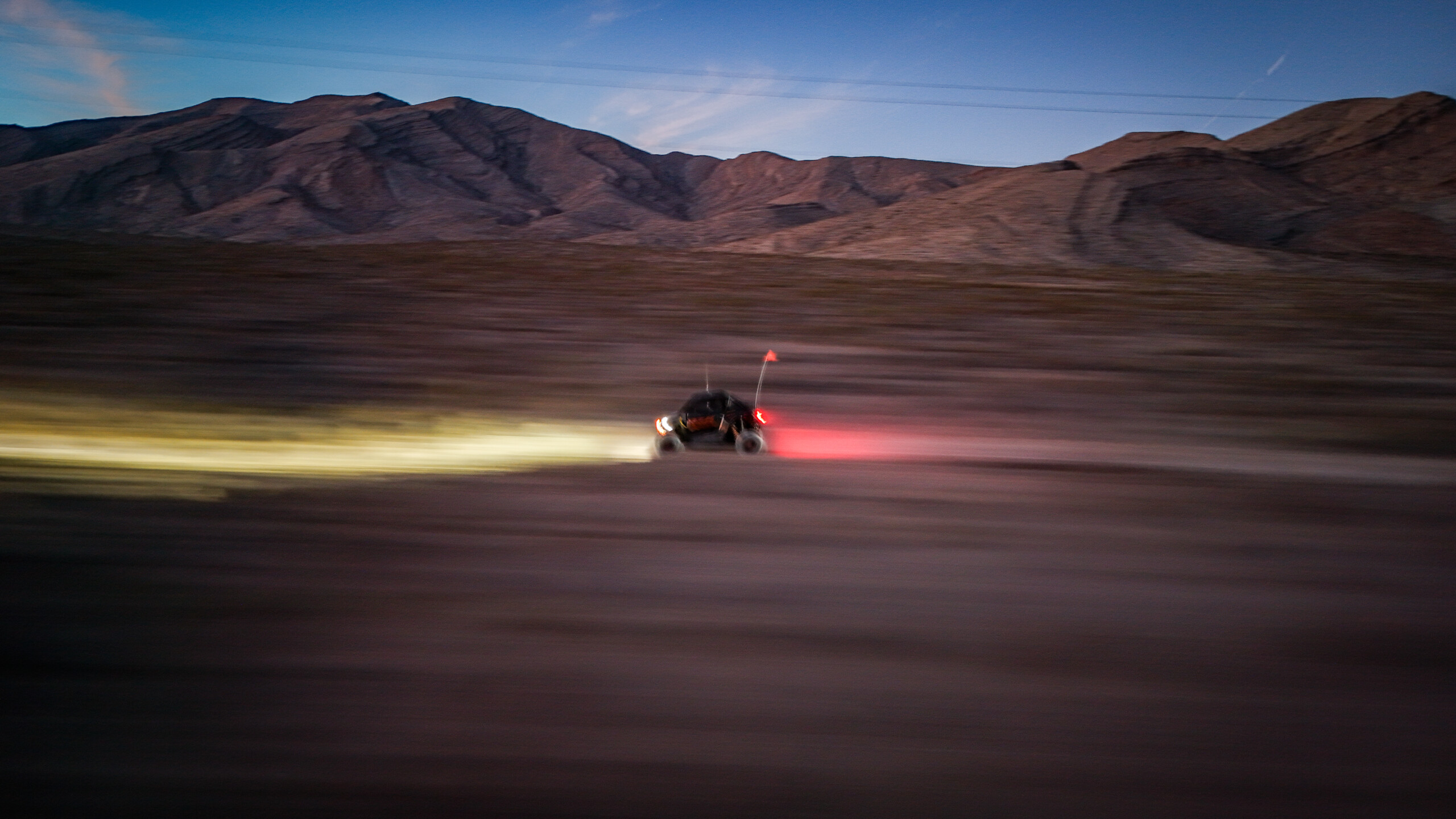Off-Road to Mt. Potosi Summit | Nevada Desert Overlanding Adventure
If you’re an adventure lover searching for the ultimate Nevada desert challenge, then Mt. Potosi off-road adventures should be at the top of your list. This rugged route south of Las Vegas blends breathtaking scenery, technical climbs, and a deep sense of history that makes it a favorite among off-roading and overlanding enthusiasts. From rocky switchbacks to sweeping desert panoramas, the Mt. Potosi trail tells a story that combines exploration, geology, and human perseverance in one unforgettable ride.
Situated near Goodsprings, NV, Mt. Potosi stands as a guardian over the Mojave’s shifting sands. With elevations reaching over 8,500 feet, it offers some of the most dramatic views in southern Nevada. Off-roaders come here for the challenge, but they leave with memories of wild beauty and desert silence.
The Legendary Landscape of Mt. Potosi
Mt. Potosi isn’t just another dusty ridge. It’s a piece of geological art that formed millions of years ago during the creation of the Mojave Desert. The trail system that winds up the mountain shows layers of sediment, ancient coral fossils, and striking mineral veins that hint at its prehistoric past.
The base of the mountain is surrounded by Joshua trees, yucca, and a surprising variety of desert wildlife. Coyotes, jackrabbits, and even bighorn sheep are known to roam these hills. For photographers, it’s a dream destination—especially at sunrise or sunset when the rocks glow deep orange and purple.
For more insight into how this region was shaped, you can explore educational sources like U.S. Geological Survey – Nevada Geology.
The Route to Mt. Potosi Summit
Planning the Journey
The overland route to Mt. Potosi starts roughly 35 miles southwest of Las Vegas. Most adventurers enter through Goodsprings Road, a gravel path that gradually transitions into rougher terrain. The entire drive from Las Vegas to the summit can take 2–3 hours depending on trail conditions and how often you stop to admire the view.
Before setting out, it’s crucial to check trail maps and recent weather updates from AllTrails or the Bureau of Land Management Nevada page. Rain or wind can change the terrain quickly.
Key Trail Sections
Base Trailhead: Wide gravel roads suitable for most 4×4 vehicles.
Mid-Elevation Ridge: Increasingly rocky sections requiring moderate driving skill.
Summit Climb: Narrow switchbacks, loose rock, and steep inclines—this is where true off-road skill shines.
The climb to the summit rewards drivers with panoramic views stretching across the Mojave Desert. It’s one of those rare experiences where you truly feel the vastness of Nevada’s wilderness.
History Hidden in the Hills
The history of Mt. Potosi runs deep. It was once the site of lead and zinc mining operations in the early 1900s. During World War II, these mines supplied essential materials for the war effort. Evidence of that era still exists—collapsed tunnels, rusted rail remnants, and old mining signs that whisper stories from another time.
In a more somber note, Mt. Potosi also made national headlines in 1942 when Carole Lombard, wife of actor Clark Gable, tragically lost her life in a plane crash on the mountain’s slopes. Today, hikers and off-roaders often stop at the memorial near the crash site, which honors those who perished.
The area’s combination of beauty and tragedy makes it one of the most emotionally resonant destinations for explorers.
What to Expect on an Off-Road Expedition
Terrain & Conditions
The Mt. Potosi off-road route offers a blend of soft sand, rocky climbs, and narrow switchbacks. Ground clearance is essential, and a 4×4 vehicle with all-terrain tires is strongly recommended.
Equipment Checklist
Before heading out, prepare your rig properly:
Full-size spare tire and repair kit
Extra water and fuel
Portable air compressor
Recovery gear (snatch strap, winch, traction boards)
Navigation tools (GPS map or offline maps)
First-aid kit and emergency food
Proper preparation ensures safety in the remote Mojave terrain, where cell service is limited and rescue options can take hours.
Wildlife and Natural Beauty Along the Trail
Mt. Potosi’s ecosystem is one of contrasts. The desert floor bursts with life in spring after rare rains, turning golden with wildflowers and desert marigolds. Lizards bask on sun-warmed rocks, hawks circle overhead, and the occasional desert tortoise crosses your path—reminding you that this land belongs first to nature.
Higher up, temperatures drop and vegetation becomes sparse, offering a clear look at the geological features that make the Mojave Desert so fascinating.
For conservation guidelines and local wildlife updates, visit Nevada Department of Wildlife.
The Overlanding Experience: Beyond Driving
Off-roading isn’t just about driving—it’s about connecting with the environment. Mt. Potosi’s remote trails invite reflection and teamwork. Whether you’re traveling solo, with friends, or as part of a tour like Vegas Off Road Tours, this journey is a powerful reminder of how humans can explore responsibly while respecting nature’s limits.
Campers can find dispersed sites at the mountain’s base. The stars here are incredible—away from the city’s glow, the Milky Way stretches wide across the desert sky. Nights can get cold, so pack thermal layers and firewood.
Tips for a Safe and Enjoyable Trip
Here are practical tips to help make your Mt. Potosi expedition smooth and memorable:
Start Early: Morning hours offer cooler weather and clearer trails.
Check Tire Pressure: Lower PSI improves traction on loose dirt.
Travel with a Buddy Vehicle: It’s always safer to off-road with company.
Pack Light but Smart: Bring essentials without overloading your vehicle.
Respect Nature: Avoid off-trail driving to protect fragile desert habitats.
A mindful approach ensures future adventurers can enjoy the same pristine beauty.
Cultural and Historical Connections
The Mojave Desert region, including Mt. Potosi, holds deep meaning for Native American tribes who once traversed these lands. The Paiute and Chemehuevi peoples left behind petroglyphs and oral histories describing the mountain’s spiritual significance. Understanding this cultural heritage adds a layer of respect to any off-road journey.
The nearby Goodsprings Ghost Town also ties into this history. Once a thriving mining settlement, it now serves as a reminder of Nevada’s boom-and-bust past.
Why Mt. Potosi Belongs on Every Off-Roader’s Bucket List
Unlike more crowded off-road spots near Las Vegas, Mt. Potosi feels wild and untouched. It offers challenge without chaos—a balance between adventure and solitude. Every turn on this trail tells a story: the geology, the history, and the perseverance it takes to reach the top.
If you’re ready to take your passion for overlanding to the next level, Mt. Potosi delivers in every sense. And with professional operators like Vegas Off Road Tours, even first-timers can experience this legendary trail safely.
Conclusion: The Spirit of the Desert Lives Here
The Mt. Potosi off-road experience is more than a physical challenge—it’s a spiritual escape into Nevada’s raw desert heart. Whether you’re drawn by the mountain’s beauty, its history, or the thrill of the climb, you’ll leave with a deep respect for the power of nature and the resilience of explorers past and present.
So, next time you’re planning your next overland adventure, make sure Mt. Potosi is on your map. It’s not just a mountain—it’s a story carved in stone, waiting for you to explore.



Who knew climbing a mountain near Las Vegas could be so… *rustic*? This article makes Mt. Potosi sound like the ultimate Las Vegas off-road adventure, complete with 4×4 challenges and a side of Mojave Desert history thats more dramatic than a soap opera. I love that it warns about loose rocks and recommends full-size spare tires – because nothing says fun like changing a tire on a desert ridge! The mention of Carole Lombards tragic crash adds a fascinating, if slightly spooky, layer. And yes, those dispersed camping spots sound amazing, especially with the promise of seeing the Milky Way without Vegass glow interfering. Just remember your thermals! Its the kind of trip that makes you feel like youve actually *done* something off the beaten path, which is more than I can say for my recent attempts at navigating the Las Vegas strip. Highly recommend for anyone tired of urban exploration!Nano Banana free
A very insightful perspective on the matter.